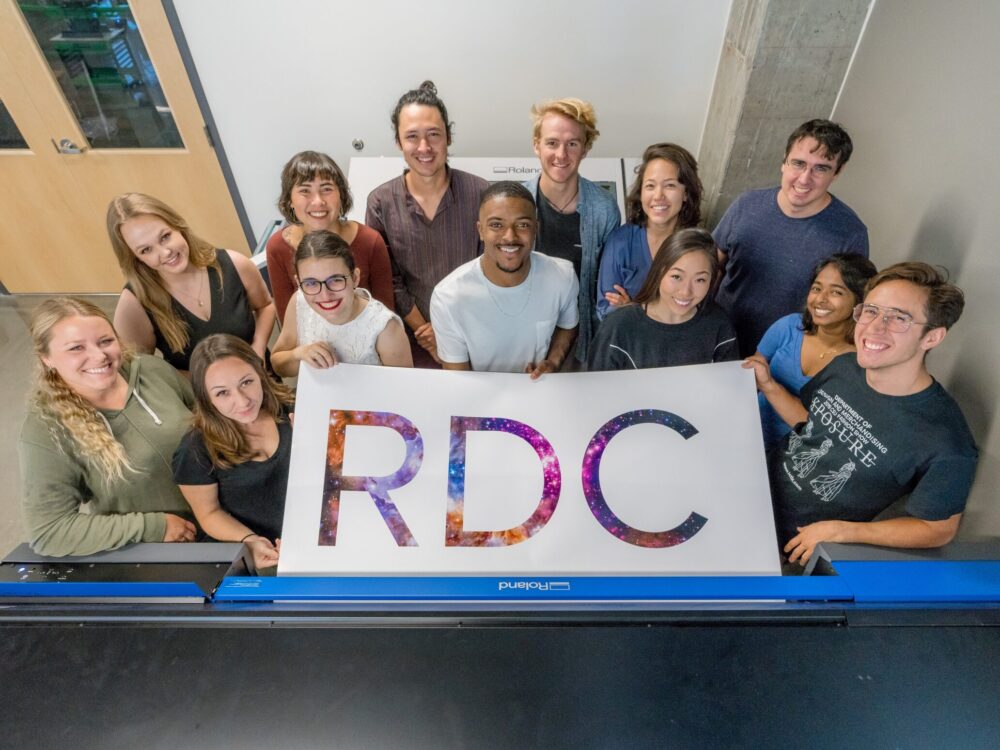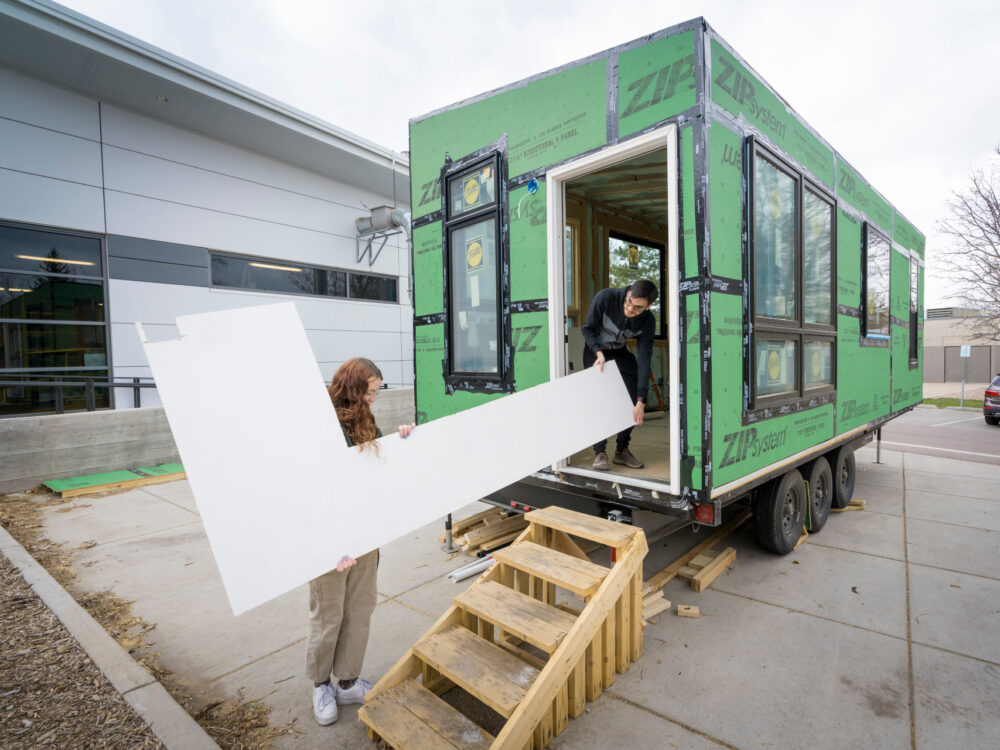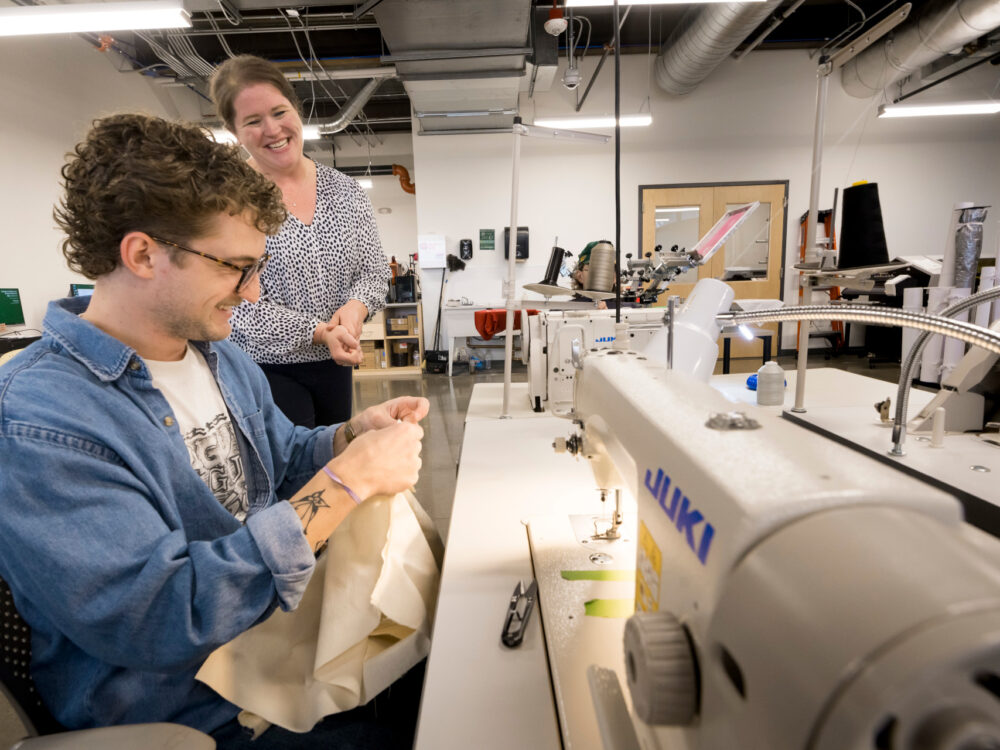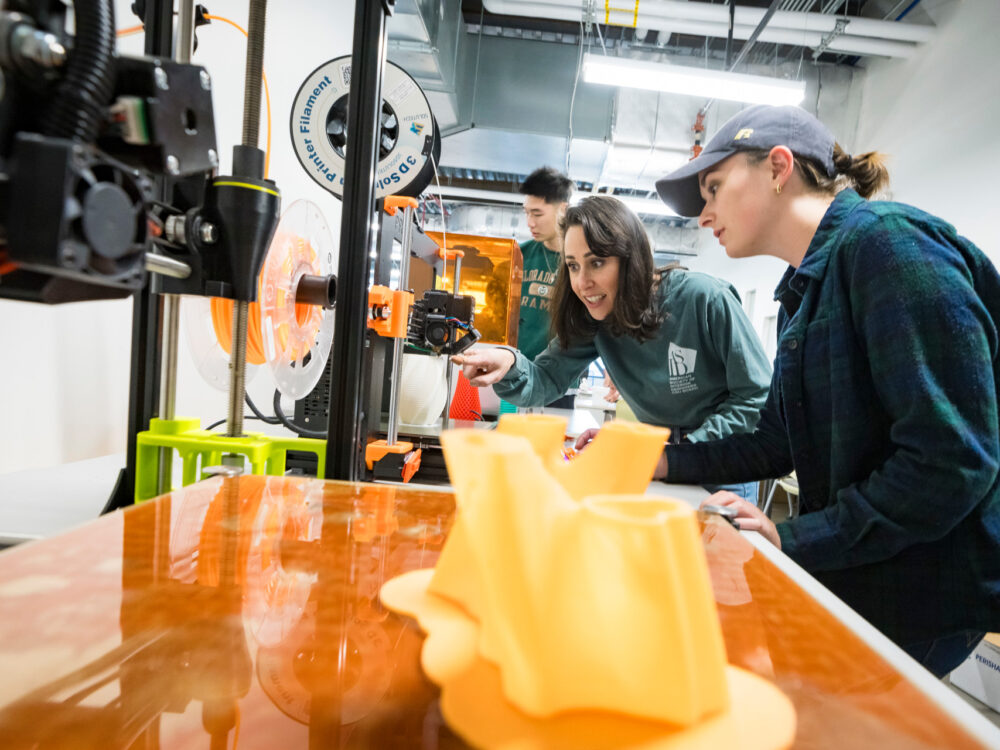Colorado State University's Land Grant Mission A learning community created for everyone.
Inspired by Colorado State University’s land-grant heritage and mission, we in the Nancy Richardson Design Center are committed to excellence, setting the standard for public research universities in teaching, research, service, and extension for the benefit of the citizens of Colorado, the United States, and the world.
Key values of Design Thinking include empathy and collaboration, and we utilize these values as a means of welcoming our learners and partners. We are a collaborative community working to address important societal problems facing our world today, through the lens of Design Thinking.

-
-
Fall 2024 Data provided by CSU Institutional Research, Planning, and Effectiveness
-
-
24.7% first-generation students
-
nontraditional students (23+) 15.5%
-
38.8% racially minoritized students
Applications for social change Designing for Justice
We bring together artists, humanitarians, scientists, entrepreneurs, engineers, design thinkers, and creatives from every discipline to tackle important, authentic problems and devise innovative solutions for socially and ecologically sustainable impacts and creative solution proposals to improve human experiences. Application of human centered design and design thinking processes, with a focus on social change and civic engagement, provide solutions to real-world problems facing some of society’s most vulnerable populations. Design justice emphasizes that the greatest impacts are made when design is led through an array of perspectives.
IDEA210: Students prototyped an app for people who are hearing impaired to be notified of imminent threats on campus.
IDEA450: Students design and build an ADA accessible tiny home.
IDEA310F: Students interview someone with a medical or developmental need and create an adaptive piece for them. For example, pockets for people’s walkers, tailoring to make clothing more accessible, and clothing that isn’t available to buy off the rack.






